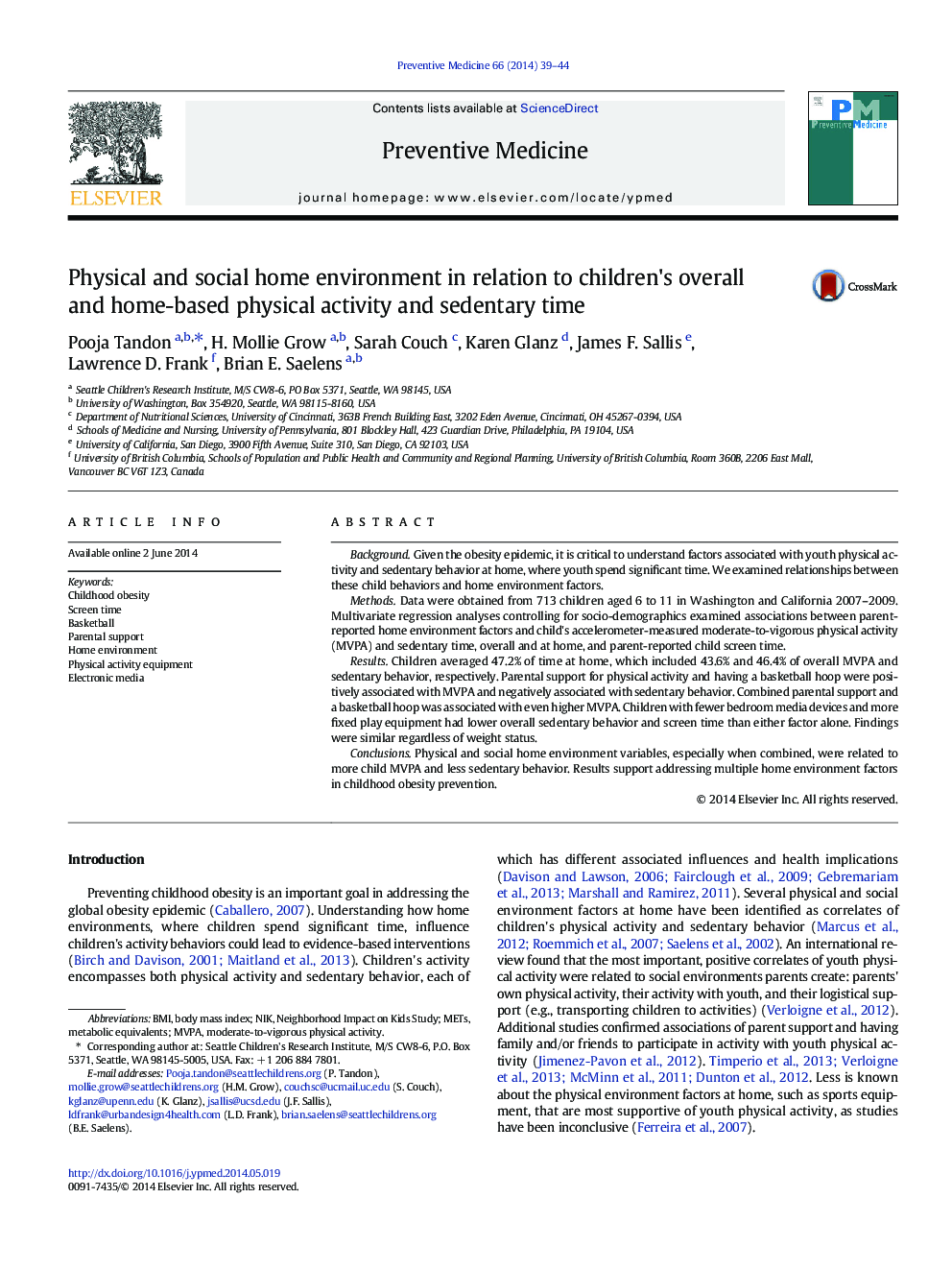| کد مقاله | کد نشریه | سال انتشار | مقاله انگلیسی | نسخه تمام متن |
|---|---|---|---|---|
| 6047009 | 1581648 | 2014 | 6 صفحه PDF | دانلود رایگان |
- Home environment influences on child physical activity and sedentary time were found.
- Parental support for activity and home basketball hoops were linked to both outcomes.
- Parent media rules were related to less sedentary time at home and less screen time.
- Combined key home variables showed even stronger associations with outcomes.
- These results support addressing home environments to improve child activity.
BackgroundGiven the obesity epidemic, it is critical to understand factors associated with youth physical activity and sedentary behavior at home, where youth spend significant time. We examined relationships between these child behaviors and home environment factors.MethodsData were obtained from 713 children aged 6 to 11 in Washington and California 2007-2009. Multivariate regression analyses controlling for socio-demographics examined associations between parent-reported home environment factors and child's accelerometer-measured moderate-to-vigorous physical activity (MVPA) and sedentary time, overall and at home, and parent-reported child screen time.ResultsChildren averaged 47.2% of time at home, which included 43.6% and 46.4% of overall MVPA and sedentary behavior, respectively. Parental support for physical activity and having a basketball hoop were positively associated with MVPA and negatively associated with sedentary behavior. Combined parental support and a basketball hoop was associated with even higher MVPA. Children with fewer bedroom media devices and more fixed play equipment had lower overall sedentary behavior and screen time than either factor alone. Findings were similar regardless of weight status.ConclusionsPhysical and social home environment variables, especially when combined, were related to more child MVPA and less sedentary behavior. Results support addressing multiple home environment factors in childhood obesity prevention.
Journal: Preventive Medicine - Volume 66, September 2014, Pages 39-44
